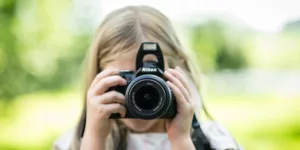All smartphones in today’s tech market have evolved into high-quality cameras with the functionality of a phone, making virtually anyone capable of becoming a photographer.
We have social media to thank for that. With people reportedly spending as much as 53.2 minutes a day on Instagram, tech has been inevitably forced to keep up. In fact, some smartphone brands have even gone as far as partnering with more respected players in photography: Nokia with Carl Zeiss, and Huawei with Leica. Because of this, the freedom to explore the art of photography with better mobility is, quite literally, in the hands of every aspiring photographer.
In these fast-paced days running at the speed of like, every second can be captured with the swipe and a tap of a screen. A quick visit to Instagram proves just that: one click on a hashtag, and you’re bombarded with thousands of beautiful photos taken by amateur smartphone-savvy shutterbugs around the world.
But with everyone being capable of taking a good picture, the question now is, how do you transform a good shot into a great one? Simple. You have to make sure that each snapshot you take is real and authentic. Read on, and we’ll show you how.
Tell a story.
“What do I want to say?”
Start with something that gets people curious. A great picture, after all, isn’t just a pretty image. It’s a moment, a story, immortalized in a single frame. So before you click the shutter, think first about what you want to share.
Do you want to capture the spontaneity that comes with great friends on a night out? Go candid by taking a picture in the middle of an inside joke.
Do you want to capture the happiness of a quiet, summer afternoon? Try framing your shot to include bits of nature, lit by the natural yellow hues of the golden hour.
When you capture a good moment, you spark your audience’s imagination. They begin to create details in their head, forming stories that make the photograph memorable. A great picture doesn’t just make you look—it makes you feel.
Find your light.
If movies have soundtracks, pictures have lighting. The way you play with light in your pictures sets the mood of the final image. Dark lighting brings about drama that is both mysterious and foreboding.
Soft lighting can make the viewer feel relaxed and at ease, lost in the beauty of a quiet day.
Bright, high contrast lighting excites and awakens, like noon under the summer sun.
Use lighting to make your stories dreary, dreamy, or downright dramatic. Taking your pictures at the right time of day means getting to tell the story you want to share.
Play with perspectives.
Just like how lighting can make or break the mood of a photo, so can the angles you choose. The way you position your camera to frame your shot can affect how your audience interprets the subject of your photo. An image shot from eye-level lets people see the world just as you see it, allowing them to connect to your story with ease.
You can also play with the size and impact of your subject by taking your shots from above or below. High angle shots make your subjects appear small and vulnerable, while low angle ones make them seem towering and dominant.
Tilting your camera diagonally, on the other hand, gives you a Dutch Tilt. This is when you take your shots at an angle that makes the horizon of your photo tilted to one side. By using this technique, you can capture everyday objects from an interesting, unusual perspective—creating images that build disorientation, restlessness, and excitement.
What’s absolutely great about angles is that… there really are no rules. So explore and have fun! See things from a whole new perspective and tell your story from a different point of view.
Go crazy with colors.
Filters often get a bad rap because of people’s tendency to overuse them. But what budding photographers don’t seem to realize is that filters, when used correctly, can elevate the mood of your picture and give it a signature touch that’s distinctly yours. Elevate complementary colors (this is a great time to revisit the color wheel) in your frame, and you create an image that’s easy on the eyes.
Make your subject pop by having it stand against a monochrome backdrop Or even play around with color temperatures to convey warmth or calm.
Forget what you’ve heard and give filters a shot. Tinker with your in-phone photography apps or try one of the many great downloadable ones like Instasize (available for iOS or Android). You just might surprise yourself.
Follow the Rule of Thirds…
In photography, there really just is one cardinal rule: the Rule of Thirds. Picture a grid in your frame, creating nine squares with two lines running horizontally and vertically. To make sure that your images are balanced and leveled, remember to place your subject where a horizontal line and a vertical line intersect. This way, your audience’s eyes are naturally drawn to your subject, making them easily relate to and connect with your story.
…but break the rest.
And now, the hardest part. Take everything you’ve read and use each of these tips as a guide as you venture on into the world of phone photography. But as soon as you open your camera, dare to forget everything you’ve learned and shoot with your gut.
Ansel Adams said, “There are no rules for good photographs—there are only good photographs”—and the best way to get there is to just keep clicking.








